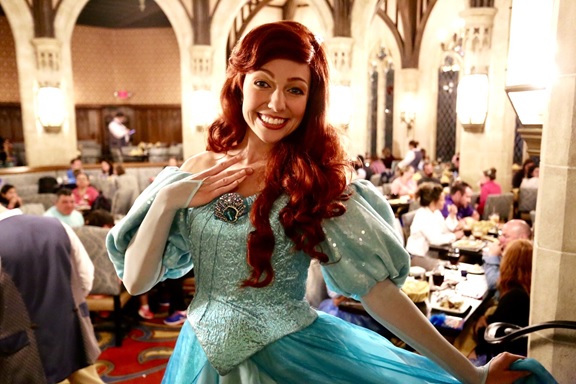By Luke Bollinger
For many college students, spring break is an opportunity to visit and explore unfamiliar places. For those seeking new experiences in new places, weather is almost always a factor. However, the problem with having spring break in March is the unpredictability of the weather. What happens when the success of the trip is dependent on the weather because the trip will be almost entirely outdoors? This is a question I faced when I went camping in Georgia for spring break this year.
When my traveling companions (Evan Mozingo, Hunter Patterson, JP Patterson and Alex Lusk) booked a camping trip to Chattahoochee Bend State Park in Georgia, we knew we were taking a risk. Our reasoning was that, though it would be March, Georgia would have to be warm. Their assumptions of the weather were off by a week. The temperature didn’t rise above 50 F almost the whole week, the sun could not seem to find its way out from behind the clouds and the wind, at times, made things miserable. The forecast for the weeks before and after our trip was 70 degrees and sunny. Due to the cooler conditions during the time we were there, it was up to us to make the best out of our circumstances.
Day 1

After a six-hour drive from Concord, North Carolina, to the state park, we stopped at the visitor’s center to check in with the ranger on duty. She laid out the rules and what the park had to offer. To our dismay, she informed us that they would not be renting kayaks. Taking a trip down the Chattahoochee River was something we had all been looking forward to. Erin, the park ranger, told us because of the weather, they were going to wait until next week to offer kayaking trip. This was our first setback.
She wished us good camping and good luck. She seemed to understand that we were a bit upset about the kayaks, as well as the weather.
Our campsite was about one-half mile from the visitor’s center. However, it wasn’t what we were expecting, as it wasn’t as secluded as we had hoped. The road led right to our site, which made it convenient for unloading our supplies, but the aura of being surrounded by nature wasn’t exactly present.
For some reason, our reservation was made for a recreational vehicle campsite.
“Have you noticed we’re the only idiots without a camper?” Hunter said.
He was the one who made the reservation.
It began to rain lightly as we started unloading our gear. After donning rain jackets, we were kept adequately dry. There were no problems setting up the tents, and we unloaded our four coolers. Regardless of what happened that week, at the very least we were not short supplied, JP noted.
About 20 minutes after arriving at the campsite, we received our first visit from the campsite ranger on duty. The ranger never seemed too keen on making conversation so we never caught his name.
“I’m a grouchy old man,” were the first words out of his mouth. And he certainly looked the part, horned-rimmed glasses and all.
“I won’t tolerate any noise after 10 p.m.,” he said. “The guy at the next site is a working man. He gets up early, and he’ll let me know if you all are loud.”
OK.
He then told us it would get below freezing that night and wished us good luck.
After our cordial welcome to the campsite, Evan and I set out to get a fire going while the rest of the crew headed off to the nearest gas station to get a couple more bags of ice. Lighting a fire proved to be a challenge, as it seemed it had been raining before we arrived at the park. Most of the wood we found was fairly wet.
Because of the weather, I knew starting and maintaining a fire was going to be essential to not being miserable. But despite our best efforts, the wood was too wet. All it would do was smolder.
Luckily, Hunter bought a couple bundles of wood from the visitor’s center for $5 a bundle, and we were able to start a blazing fire. By that point my fingers were numb, so I didn’t step away from the fire until dinner.
The fire pit at our site was a circle of metal about six inches high that was dug into the gravel. We found that if we placed the gathered wood beside or on top of the pit, we could dry the logs out in a couple of hours, as we weren’t too fond of spending $20 a day on firewood.
By the end of the week, we would all be experts at starting fires.
For dinner that night, we heated up some spaghetti, a much-appreciated contribution from the parents of Hunter and JP that we cooked on one of our propane grills. At the end of our first day, that meal tasted better than any spaghetti dish I’ve had at a restaurant. I was already beginning to appreciate the smaller things in my life. That’s what camping is all about, right? Simplicity? That’s what I was telling myself.
After dinner we all set around the fire to unwind and enjoy a few beers. This was short-lived, however, as the wind picked up significantly. We moved inside to the five-person tent for a friendly game of poker.
Day 2
I woke up the next day feeling well rested. The REI tent Evan and I were staying in did a good job at retaining heat. Despite the cold weather, I’m not sure I had ever been warmer sleeping in a tent.
Leaving the tent, though, was disappointing. It was a bitter cold morning, and the day did not get much warmer. We kept track of the sun that day and saw it leave the cover of the clouds just twice.
Evan, Hunter and I decided to do a bit of hiking. Alex and JP, however, felt exploring the park was not worth leaving the comfort of the fire, which we had started immediately after we woke up.
We chose the riverside trail, which offered great views of the Chattahoochee River and the surrounding swamp area. The trail was well-maintained and not very challenging. After hiking about three miles, we decided Alex and JP were onto something when they stayed behind. We turned back, but a couple of wrong turns later and we were near the edge of the park, about another two miles from our site.
After eventually finding our way back to the campsite, we soon set out to make dinner. The abysmal weather had all of our spirits down. But a feast of marinated chicken cooked on one grill, along with macaroni and cheese and green beans cooked on the other, had us feeling much better about our situation.
We retired to the fire for a couple of hours before heading to bed. We were ready to be done with the cold.
Day 3
Our third day in the park was the coldest of the week, as the temperature hovered between 35 and 40 degrees for most of the day. But with the sun was finally shining, I felt warm enough to shed my third layer of clothing.
The itinerary for the morning was to head into Newnan to buy groceries for the rest of the week. Newnan is the closest town to the park and was a 40-minute drive.
While we were in town, Evan and Hunter bought fishing licenses at Walmart for $23 each. Despite park ranger Erin’s warning that fishing was practically impossible on the river because of the steep banks and overhanging trees, they were desperate for something to do other than standing around the fire.
Once we got back to the campsite, we headed to the river. Evan and Hunter settled on a spot fairly clear of trees to cast their lines. We descended the banks, which were still wet from the rain. Hunter lost his footing and came two feet from taking a dip in the frigid water. Evan also came close to taking a swim after losing his balance laughing at Hunter. It wasn’t the best start to their fishing endeavor. Evan subsequently got his line caught in a tree. Park ranger Erin’s warning was proving valid.
While the two fishermen waited patiently for the fish to bite, I found myself at a spot higher up on the bank where I could comfortably read the book I had brought on the trip. With the sun warming my body, I soon fell asleep – the first nap I had afforded myself all semester. I awoke 30 minutes later to learn that they had not even had a nibble.
Day 4
Evan and Hunter, still determined on catching some fish, found a large lake about 20 minutes from the park. Despite the rest of us not having fishing licenses, a day by the lake would be a nice change of scenery. We loaded up in the truck with a football and a cooler with our lunch and headed to West Point Lake.
It was another sunny day, but the fish still were not biting. I was a bit relieved they didn’t catch anything, though, because they had said they wanted to cook anything they caught for dinner, which was a task I knew would not be worth the trouble.
Day 5
We made it to the final day. The consensus of the group was that we had experienced about all the park had to offer, so we decided to head back into town to find a Buffalo Wild Wings to watch the first round of the NCAA Men’s College Basketball Tournament.
After spending a couple of hours watching the Tar Heels rout Texas Southern, we headed back to the campsite for the final night.
We cleaned up around the campsite and got everything ready to leave the next morning, then walked down to the river to catch the sunset. Afterward, we got the fire going. We had broken our two hatchets at this point, but we figured out we could split wood by hammering a metal wedge into the log by dropping a larger log on the wood.
Bedtime was early that night, as most of us were ready for the morning to come.
Final Thoughts
Though the weather significantly altered the experience we were expecting, it was nonetheless an experience. When it comes to camping, sometimes it’s trial and error. We now know not to book a spring break camping trip in January, as we won’t know what the weather is going to be like in March. I’ve also realized that the campsites in Georgia do not offer anything different than a campsite you might find near the base of the North Carolina Appalachian Mountains. You live and you learn.
Edited by Matt Wotus



